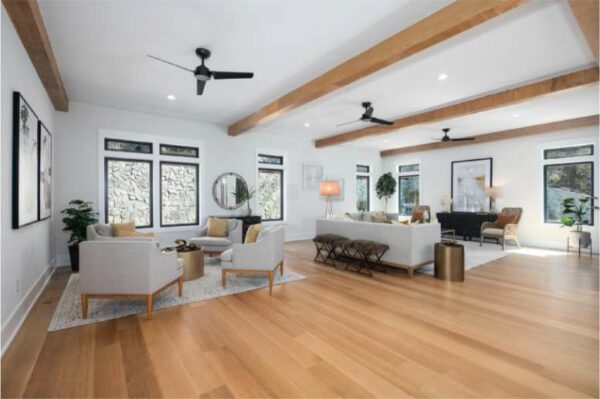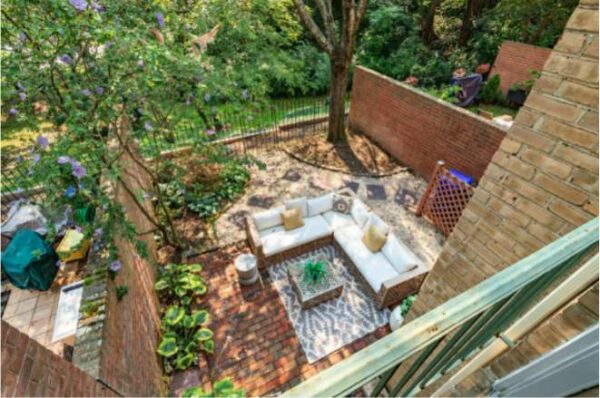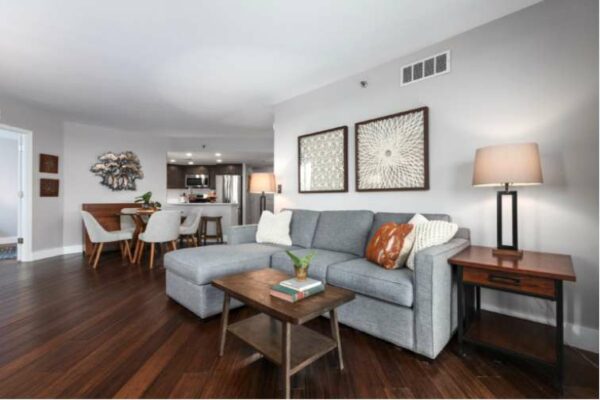This regularly scheduled sponsored Q&A column is written by Eli Tucker, Arlington-based Realtor and Arlington resident. Please submit your questions to him via email for response in future columns. Video summaries of some articles can be found on YouTube on the Ask Eli, Live With Jean playlist. Enjoy!
Question: Do you recommend staging for vacant homes?
Answer: When you stage a home, you are placing temporary furniture and accessories in a home while it is being marketed for sale. In most cases, I strongly encourage staging a home instead of leaving it empty.
The value of staging shows up in two critical parts of the selling/marketing process. It improves the quality of the photos by helping people understand the scale and purpose of a room. Better photos lead to more showings. Good staging also improves the way Buyers experience the home in-person during a showing. Better showings lead to better/more offers.

In my opinion, the three main benefits to staging a home are:
- Add life to empty homes: Walking into an empty house can be eerie and makes a home feel lifeless. Those are not feelings you want potential buyers to have while walking through your home. Good staging can add energy and life to a vacant home.
- Help rooms feel larger: This is counterintuitive, but most people perceive empty rooms as being smaller than they really are. I’ve experienced this on numerous occasions walking through empty rooms with buyers who have trouble understanding how a bed or couch can fit into an empty room that is more than big enough for their furniture.
- Engage the eye: Well-staged properties keep buyers engaged with room layout and functionality, but unstaged, empty rooms allow buyers to focus on flaws like paint scuffs, separating trim, poor lighting and other things you’d prefer buyers to overlook during their visit.
You do not need to stage every room. In a larger townhouse or single-family home, that can get unnecessarily expensive. Prioritize the most important rooms like the living room, dining room and primary bedrooms for the best return on investment. Accessorizing walls, countertops and shelves also adds a lot of value.

Good staging isn’t cheap, often ranging from about $2,000 to $10,00+ depending on the size of a home and type of staging furniture, but it should be looked at as an investment like anything else you do to prepare your home for sale like painting, cleaning and landscaping. As a rule of thumb, I think investing .25-.5% of the market value of a home generates a clear, strong return.
Cheap, thoughtless staging provides little or no value at all. Sticking a chair or two in the living room or simply laying a blow-up bed on the floor of a bedroom are not the same and provide little, if any, benefit.
If you intend on living in your home or leaving your existing furniture for the sale (photos and showings), consider “occupied” staging, whereby you hire a stager to help you maximize the use of your existing furniture and accessories. Just promise not to get offended if they recommend removing your favorite lime green shag carpet. ☺

If you’d like to discuss buying, selling, investing or renting, don’t hesitate to reach out to me at [email protected].
If you’d like a question answered in my weekly column or to discuss buying, selling, renting, or investing, please send an email to [email protected]. To read any of my older posts, visit the blog section of my website at EliResidential.com. Call me directly at 703-539-2529.
Video summaries of some articles can be found on YouTube on the Ask Eli, Live With Jean playlist.
Eli Tucker is a licensed Realtor in Virginia, Washington DC, and Maryland with RLAH Real Estate, 4040 N Fairfax Dr #10C Arlington VA 22203. 703)-390-9460.


